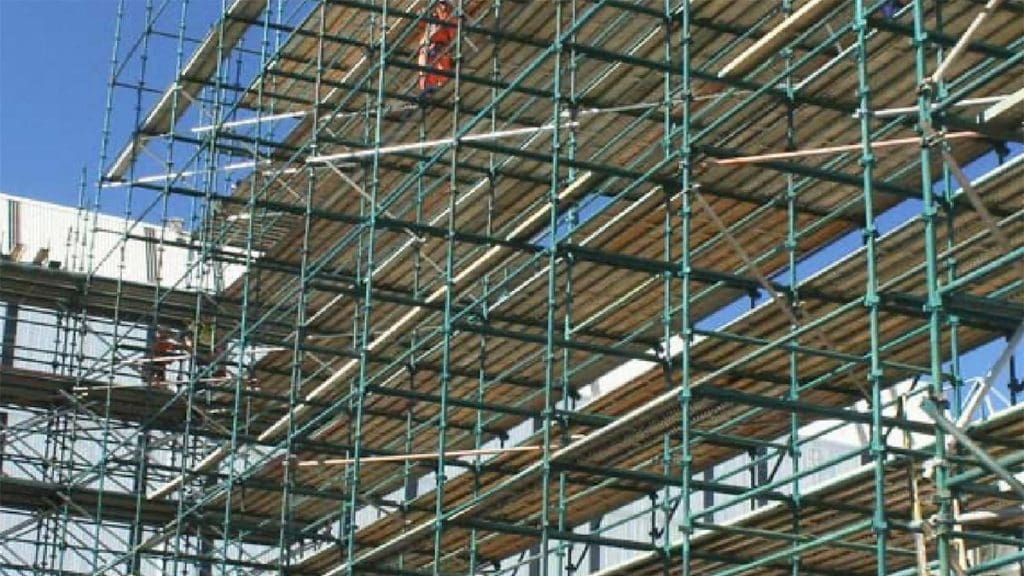Dependable Domestic Scaffolding for Homeowners in Need of Safe Renovations
Dependable Domestic Scaffolding for Homeowners in Need of Safe Renovations
Blog Article
The Advantages of Scaffolding for Safety And Security and Performance in Building Projects
Scaffolding is an essential element in the world of construction, dramatically contributing to both safety and functional performance. By offering safe and secure platforms and enhanced access to elevated workplace, scaffolding not only mitigates autumn hazards but also enhances the workflow for building groups. Its convenience enables for adaptation across various project types, making sure conformity with safety policies. The effect of scaffolding prolongs past fundamental security actions; its tactical execution can transform project timelines and outcomes. Checking out these diverse benefits discloses insights that are critical for any kind of construction professional.
Improved Employee Safety

Improved employee safety and security is an extremely important issue in the building and construction sector, where the risks associated with falls and mishaps can have alarming consequences. Reliable scaffolding systems play an important function in reducing these threats by supplying stable systems for employees at raised heights. By making sure that scaffolding is properly erected and preserved, construction business can dramatically reduce the likelihood of falls, which are amongst the leading root causes of work environment injuries and deaths.
Moreover, scaffolding boosts safety and security via its style functions. Guardrails, toe boards, and non-slip surfaces add to a secure workplace, reducing the threat of mishaps. In addition, scaffolding allows workers to access hard-to-reach areas without the demand for makeshift remedies, which can compromise safety standards.
Training workers on the correct use scaffolding is equally vital. Ensuring that employees are well-informed about tons capabilities, setting up procedures, and security methods further boosts the performance of scaffolding in protecting against accidents. Finally, including durable scaffolding systems within building jobs not only boosts worker safety and security yet likewise promotes a culture of safety that benefits the whole workforce while enhancing total efficiency.
Improved Gain Access To and Wheelchair

Moreover, scaffolding permits the hassle-free transport of products and tools, decreasing downtime connected with moving devices. Employees can efficiently access various areas of a project, which is especially essential in complex builds where vertical and horizontal movement is frequent - Scaffolding. This ease of access not only streamlines procedures however additionally allows teams to respond quickly to changing job demands
Additionally, scaffolding can be customized to suit details site problems, improving flexibility in limited or irregular rooms. This versatility ensures that building activities can proceed smoothly, regardless of the difficulties presented by the setting. By fostering enhanced access and wheelchair, scaffolding plays a crucial duty in supporting building and construction teams and enhancing the general performance of building projects.
Raised Project Performance
In building and construction, task performance is considerably affected by the reliable usage of scaffolding systems. By supplying a stable and safe and secure platform for employees, scaffolding decreases downtime and increases the rate of building tasks. With enhanced accessibility to raised workspace, groups can complete jobs a lot more swiftly, lowering the overall project timeline.
The modular nature of modern-day scaffolding permits quick setting up and disassembly, allowing quick transitions in between various stages of a job. This flexibility not just improves process however additionally adds to much better sychronisation amongst various trades, as multiple groups can function concurrently on different areas of a framework.
In addition, scaffolding ensures that employees are positioned correctly to do their tasks without unneeded pressure or threat of injury, consequently reducing the possibility of accidents that can cause expensive hold-ups. Enhanced safety procedures installed in scaffolding systems, such as guardrails and toe boards, additional support reliable procedures by preserving employee focus on the job handy instead of security worries.

Adaptability for Various Tasks
Scaffolding systems stick out for their adaptability across a variety of building jobs, with the ability of meeting particular website demands and tasks. Their modular design permits for quick modifications to suit different structure kinds, from property to business frameworks, making sure that workers have risk-free gain access to at different elevations and angles.
These systems can be customized for diverse applications, such as façade work, indoor restorations, or sturdy commercial projects. Light-weight aluminum scaffolds are ideal for indoor job, while durable steel frameworks offer the necessary support for massive building. The flexibility of scaffolding includes its ability to be set up for both short-lived and irreversible structures, permitting contractors to successfully prepare and execute their jobs.
Furthermore, scaffolding can be used in challenging atmospheres, consisting of metropolitan setups where room is restricted or on irregular surface where traditional accessibility options are unwise. This adaptability reduces the demand for several gain access to solutions, minimizing costs and task timelines. By suiting a selection of problems and jobs, scaffolding boosts the overall effectiveness and efficiency of building and construction efforts, verifying to be a vital property in the structure sector.
Compliance With Safety Standards
Just how can building tasks ensure the safety and security of employees while maintaining efficiency? Regulatory frameworks, such as OSHA in the United States, supply standards that regulate the usage of scaffolding, guaranteeing that it meets strict safety and security criteria.
Correct scaffolding style and setup play a critical role in compliance. Training employees on secure scaffold use and the significance of compliance with security standards further enhances a society of security on-site.
Additionally, paperwork and record-keeping site pertaining to security evaluations and worker training are important. These methods not just demonstrate conformity yet likewise provide liability and transparency. Inevitably, by prioritizing adherence to safety and security requirements, construction projects can cultivate a much safer workplace, thereby boosting productivity and performance without compromising worker safety.
Conclusion
In conclusion, look what i found scaffolding serves as an important part in building projects, substantially enhancing safety and security and performance. Adherence to security requirements underscores the value of scaffolding in accomplishing effective task outcomes, making it essential in the construction market.
Scaffolding is a crucial element in the world of building and construction, significantly contributing to both security and operational effectiveness. The influence of scaffolding expands past fundamental safety measures; its critical implementation can change task timelines and results. In final thought, including robust scaffolding systems within construction projects not just enhances employee security but likewise promotes a culture of safety and security that profits the whole workforce while boosting total performance.
In final thought, scaffolding serves as a vital part in building tasks, significantly enhancing safety and security and performance. Adherence to safety requirements underscores the significance of scaffolding in accomplishing successful task results, making it vital in the building sector.
Report this page